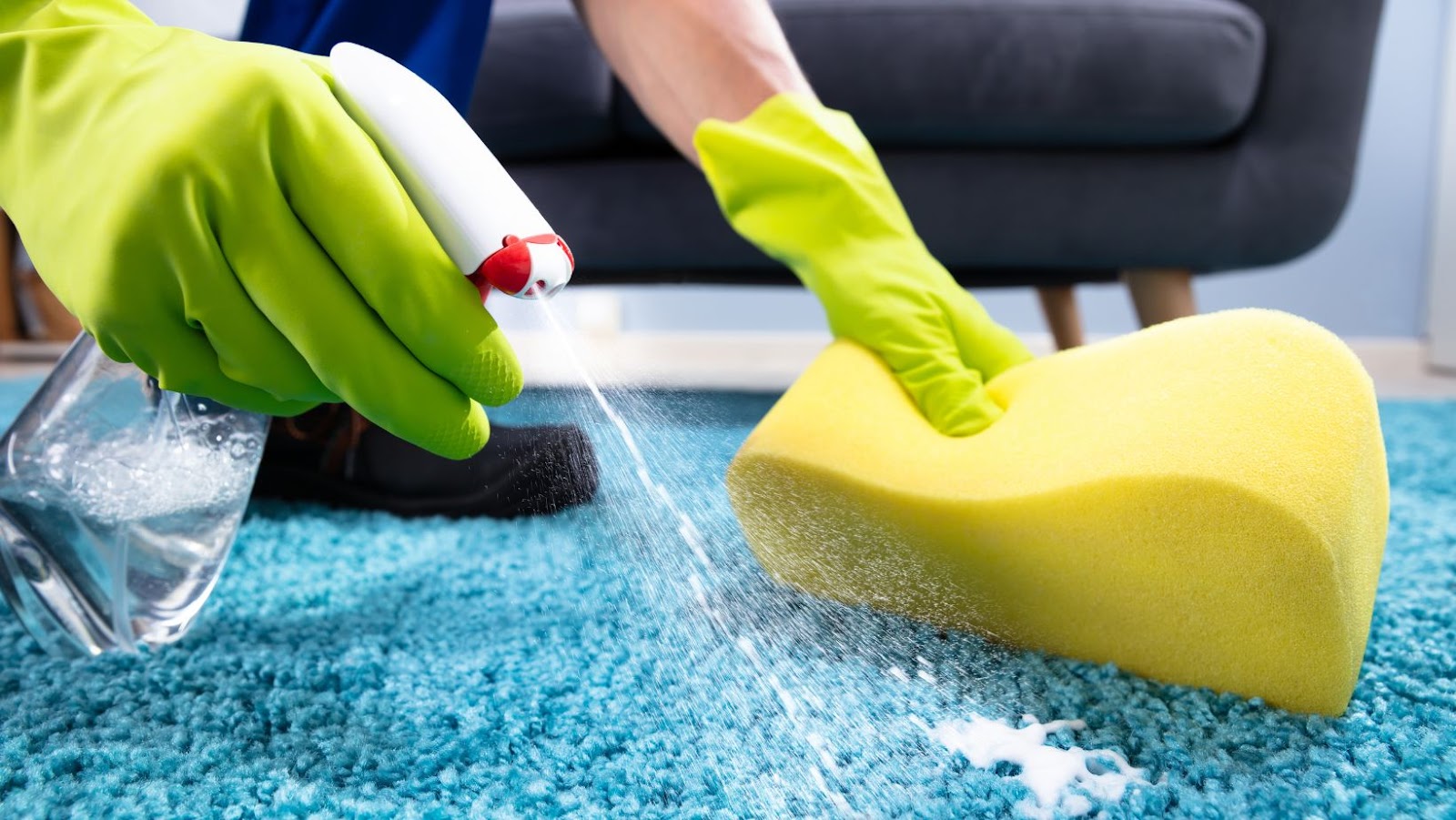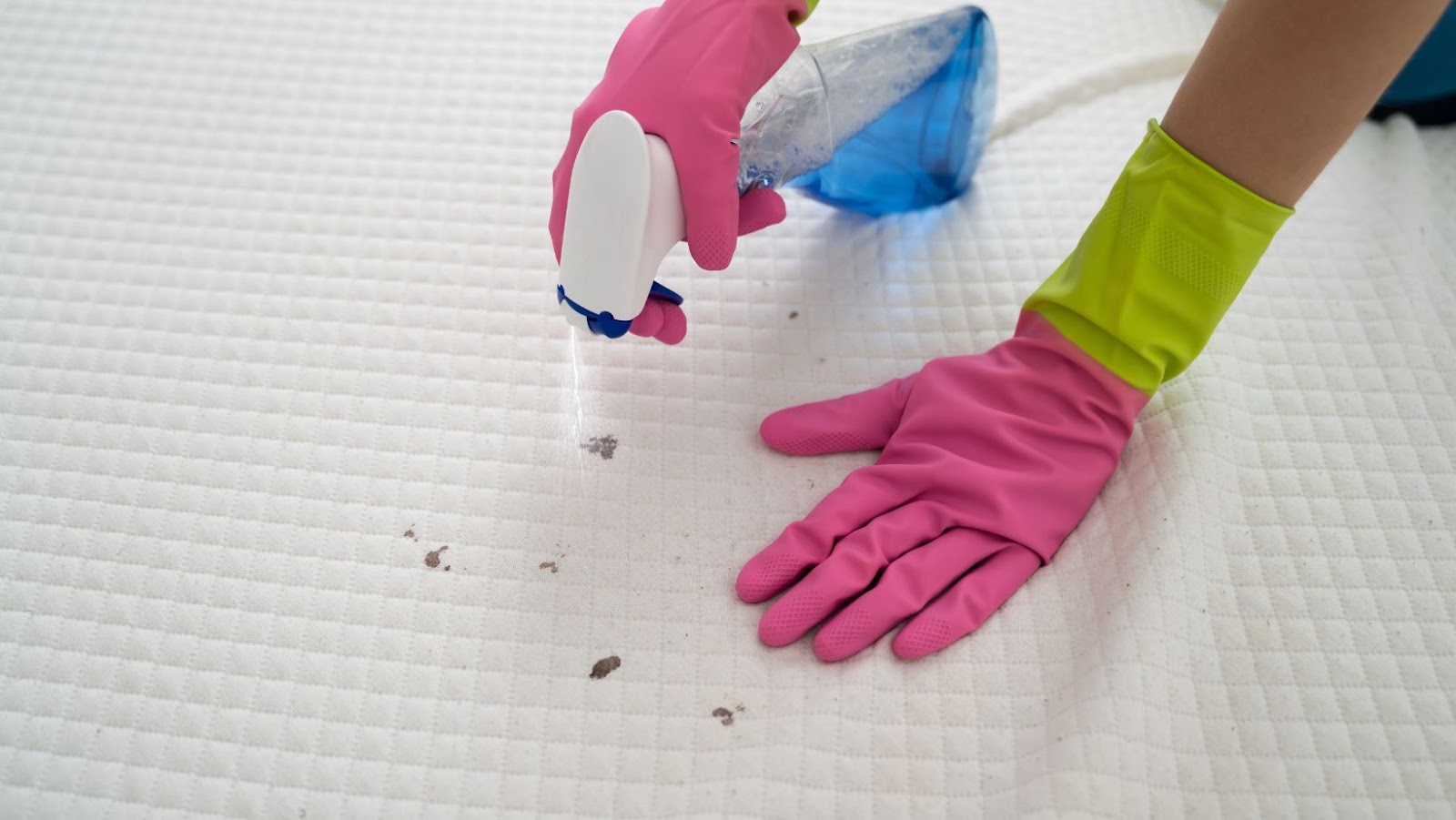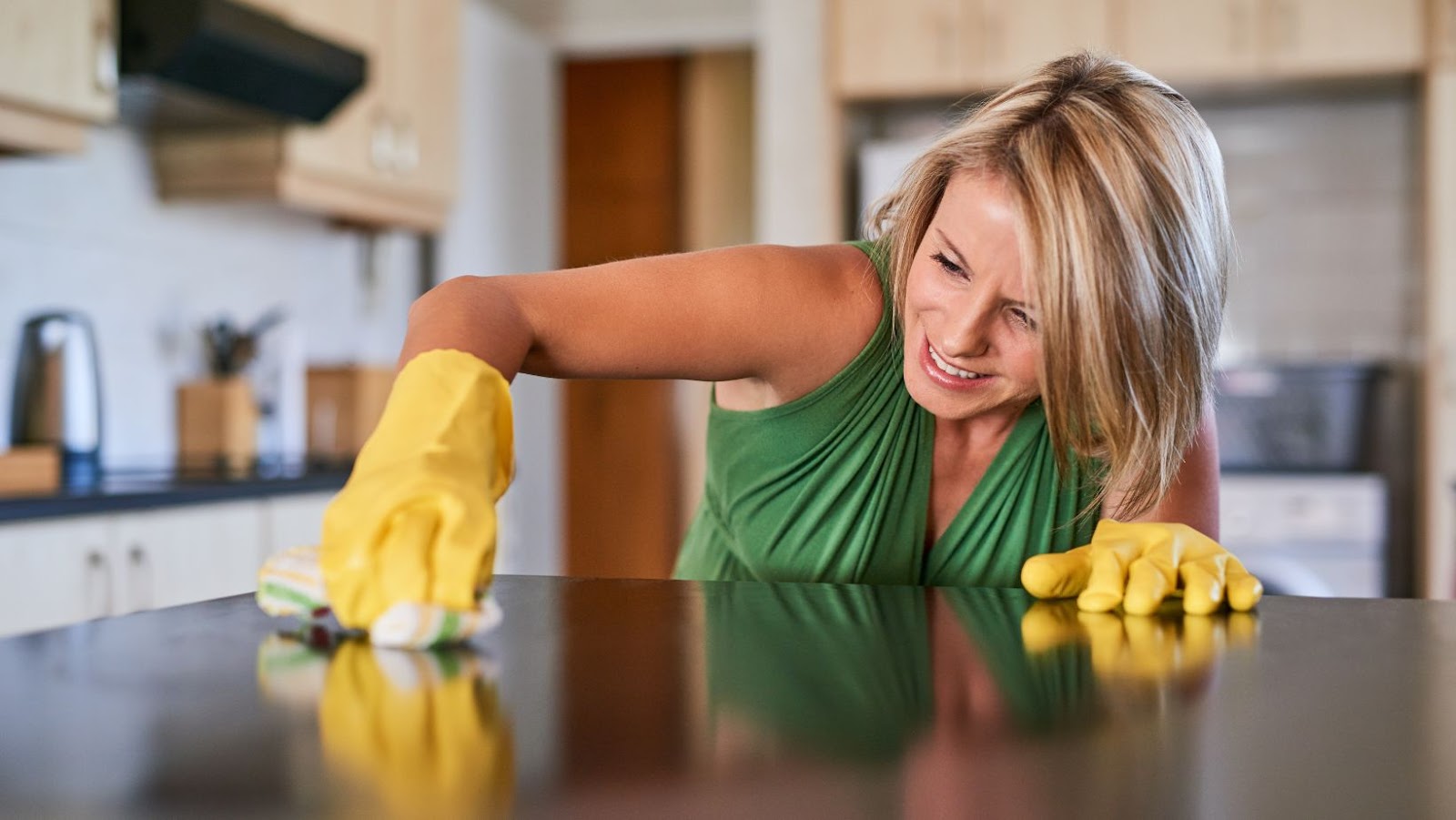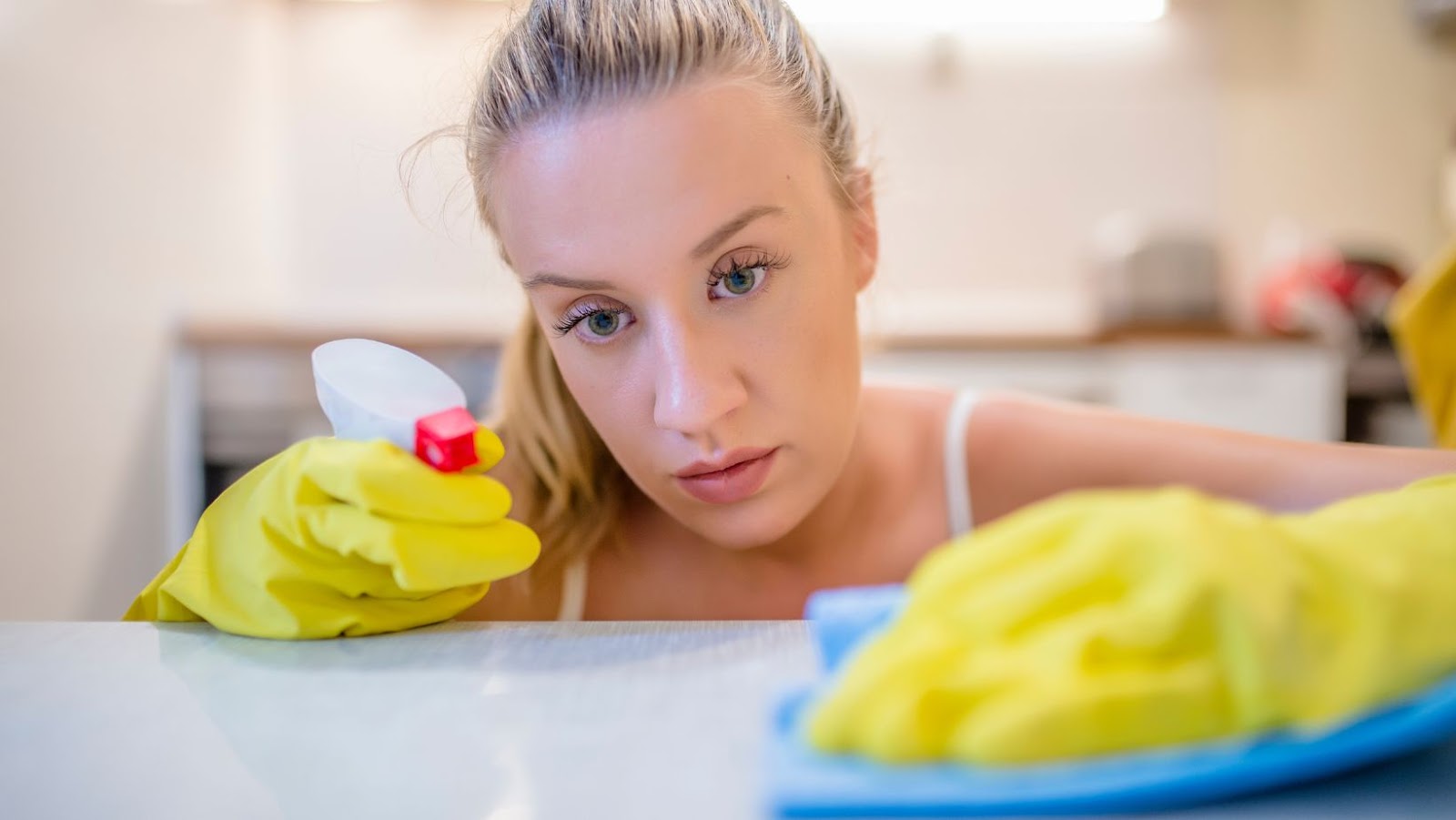If you have hard water, chances are you’ve experienced calcium buildup. This unsightly white film builds up on showerheads, faucets, and other surfaces, making them appear dirty and damaged. In this article, I’ll show you how to effectively clean calcium buildup using simple household items.
Before cleaning the calcium buildup, I’d recommend wearing gloves to protect your hands and opening a window for ventilation. One of the easiest ways to clean calcium buildup is to use a mixture of vinegar and water. Simply combine equal parts vinegar and water into a spray bottle, then spray the affected area and let it sit for 15-20 minutes.
After the mixture has had time to soak, use a clean rag or sponge to scrub the surface, then rinse thoroughly with warm water. For more stubborn buildup, you can create a paste using baking soda and water. Apply the paste to the affected area, then scrub with a brush or sponge and rinse. With just a few simple steps, you can effectively clean calcium buildup and restore your fixtures to their natural shine.

How to Clean Calcium Build Up
Cleaning calcium buildup can be a challenging and time-consuming task, but there are several effective methods to get rid of it. Here are some of the best methods for how clean calcium buildup:
- Vinegar Solution – A simple vinegar solution can do wonders in cleaning calcium buildup. Mix equal parts of water and white vinegar in a spray bottle, spray it on the affected area, and let it sit for a few minutes. Scrub the surface with a brush and wipe it clean with a cloth.
- Baking Soda Paste – Baking soda is another powerful cleaning agent that can help eliminate calcium buildup. Mix baking soda with water to make a paste and apply it to the affected area. Use a brush to scrub the surface and rinse it off with water.
- Lemon Juice – Lemon juice is a natural acid that can dissolve calcium buildup. Squeeze fresh lemon juice onto the affected area and let it sit for a few minutes. Scrub the surface with a brush and rinse it off with water.
- Chemical Cleaners – There are many commercial chemical cleaners available that are specifically designed to clean calcium buildup. However, it’s essential to read the labels carefully and follow the instructions to avoid any damage to the surface.
- Prevention – Prevention is always better than cure. Regularly cleaning and drying the surfaces can help prevent calcium buildup. Using water softeners can also significantly reduce the chances of calcium buildup.
Removing calcium buildup can be a challenging task, but with the effective methods mentioned above, it can be easily accomplished. Remember to always be cautious and follow the instructions carefully to avoid any damage to the surface you’re cleaning.

Natural Cleaners for Tackling Calcium Deposits
Calcium buildup can be a stubborn and frustrating problem to deal with, but there are some natural cleaners that can help make the cleaning process easier. Here are a few options to consider:
- Vinegar: White vinegar contains acetic acid, which is effective in breaking down calcium deposits. To use it, simply mix equal parts of white vinegar and water and apply it to the affected areas. Leave the solution on for a few minutes, then scrub the area with a brush or sponge and rinse thoroughly with water.
- Lemon Juice: Lemon juice is another natural acid that can be used to break down calcium buildup. Apply lemon juice directly to the affected area, let it sit for several minutes, then scrub it away with a brush or sponge.
- Baking Soda: Baking soda can also be effective in removing calcium deposits. Create a paste by mixing baking soda with water, then apply it to the affected area and let it sit for a few minutes. Then, scrub the area with a brush or sponge and rinse with water.
- Hydrogen Peroxide: Hydrogen peroxide is a natural bleaching agent that can be effective in removing calcium stains. Apply it to the affected area and let it sit for several minutes, then scrub with a brush or sponge and rinse thoroughly with water.
It’s important to note that these natural cleaners may not work as quickly as chemical cleaners, so it may take a bit more time and effort to fully remove calcium buildup. However, they are gentler on surfaces and safer for the environment.
Remember to always test on an inconspicuous area first to ensure that the cleaner won’t damage the surface you are cleaning. With a bit of elbow grease and some natural cleaners in hand, you can successfully tackle calcium buildup and restore your surfaces to their former shine.

Preventive Measures to Keep Your Surfaces Clean and Shiny
Cleaning calcium buildup can take a lot of elbow grease, but taking preventive measures can significantly reduce the frequency and difficulty of having to remove it. Here are some techniques you can use to prevent calcium buildup and keep your surfaces clean and shiny.
- Use a water softener: Hard water is one of the primary culprits of calcium buildup. A water softener removes the minerals that cause hard water and makes it easier to clean your surfaces. If a water softener is not an option, try using distilled water for cleaning.
- Dry your surfaces: Allowing water to evaporate naturally can result in a white residue left behind by minerals. After cleaning, it’s essential to dry the surface with a clean, dry towel or cloth to prevent the minerals from depositing.
- Clean surfaces regularly: Regular cleaning is crucial in preventing calcium buildup. Neglecting to clean surfaces can cause buildup to occur, making it harder and more time-consuming to remove.
- Use vinegar as a natural cleaning solution: Instead of using harsh chemicals, vinegar is an effective and natural solution for removing calcium buildup. The mild acidic properties of vinegar can help to break down the mineral buildup.
- Use a squeegee: After a shower or bath, use a squeegee to remove excess water from the surface of tiles, glass, or other surfaces. This practice can help prevent the buildup of minerals and eliminate water stains.
By following these measures, you can prevent calcium buildup and keep your surfaces clean and shiny. Regular maintenance can save time and money in the long run and help maintain the longevity of your surfaces. So, try to clean your surfaces regularly using vinegar or other natural cleaning solutions, and if possible, use water softening or distilled water to minimize mineral deposits.
Conclusion: Say Goodbye to Stubborn Calcium Buildup
After following the step-by-step guide on how to clean calcium buildup, you should now be able to see the results for yourself. With just a few common household items and a bit of elbow grease, you can say goodbye to those unsightly white stains caused by hard water.
It is important to note that regular cleaning can prevent calcium buildup from becoming a severe problem in the first place. By using a water softener or vinegar soak once a month, you can keep your surfaces looking spotless and prevent long-term damage.
Not only will cleaning calcium buildup improve the appearance of your home, but it is also essential for maintaining the functionality of your appliances. Over time, the buildup can clog pipes and decrease water flow, leading to costly repairs. Thus, it is crucial to make cleaning calcium buildup a regular part of your home maintenance routine.
By using the tips outlined in this guide, you can make sure that your hard water problems are a thing of the past. So take charge of your home’s cleanliness and say goodbye to stubborn calcium buildup for good!

